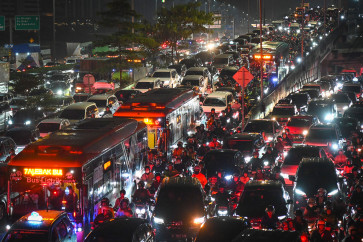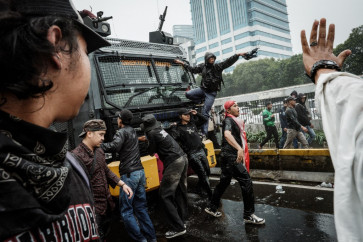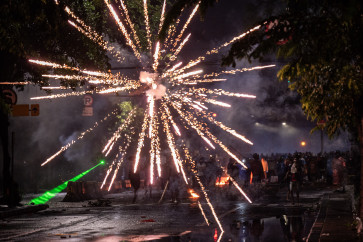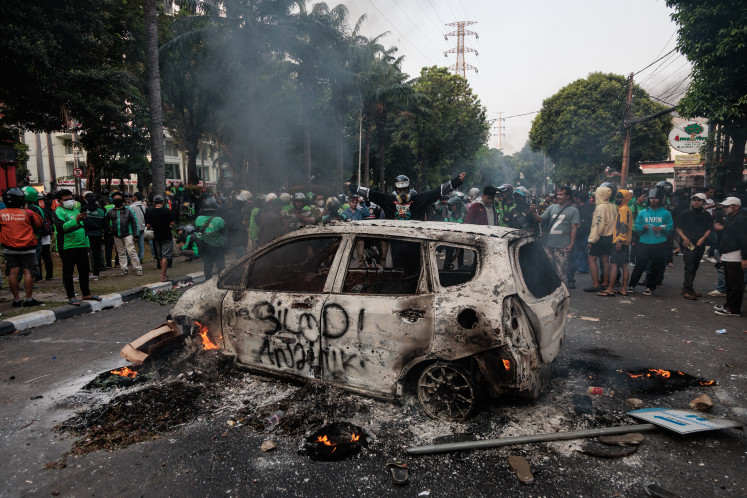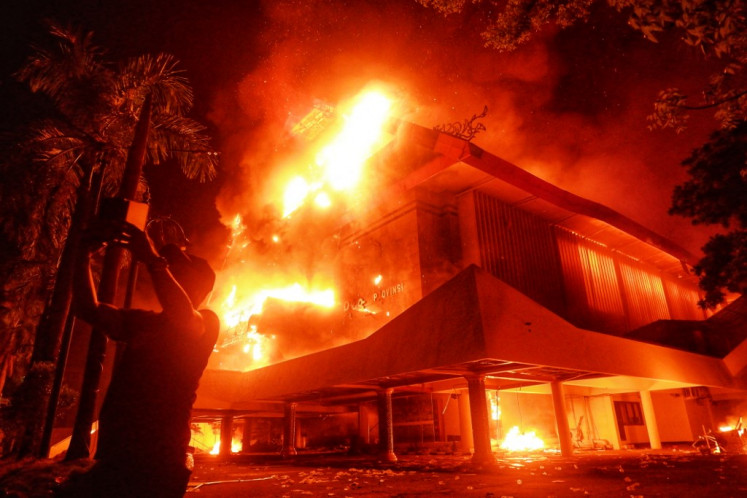Popular Reads
Top Results
Can't find what you're looking for?
View all search resultsPopular Reads
Top Results
Can't find what you're looking for?
View all search resultsDevelop busway before LRT: ITDP
The Institute for Transportation and Development Policy (ITDP) has argued that improving and expanding the Bus Rapid Transit (BRT) system should be a higher priority than building the Light Rail Transit (LRT) system planned by the Jakarta administration
Change text size
Gift Premium Articles
to Anyone
T
he Institute for Transportation and Development Policy (ITDP) has argued that improving and expanding the Bus Rapid Transit (BRT) system should be a higher priority than building the Light Rail Transit (LRT) system planned by the Jakarta administration.
ITDP country director Yoga Adiwinarto said recently that the capital city already had a quite good BRT system in the network managed by city-owned PT Transportasi Jakarta (Transjakarta).
'It does not need much funding to maximize and improve the system, so it can be more reliable and transport more passengers,' he said.
Yoga said that according to ITDP records Transjakarta had spent only Rp 8 trillion (US$587 million) on construction and operation of its fleet in the last 11 years.
'[However] in 11 years, the fleet has managed to transport around 700 million passengers,' he added.
He added that it was far cheaper than the LRT system in which the construction of one corridor costs Rp 17 trillion. 'With the same money, we could operate Transjakarta for the next 20 years,' he said.
Yoga said the passenger capacity of LRT was also small with the ability to transport only 15,000 passengers per hour per direction, while the BRT could reach up to 45,000 passengers per hour per direction.
'Transjakarta Corridor 1 serving Blok M to Kota Tua in West Jakarta could be improved until passenger numbers reach up to 20,000 passengers per direction,' he said.
Transjakarta currently only transport around 350,000 passengers over 12 routes per day. According to Jakarta Transportation Council (DTKJ) records there were 34.1 million Transjakarta passengers between January and April this year, down 8.5 percent from the 37.3 million in the same period last year.
Yoga said the city administration usually blamed bus lanes clogged with private vehicles as the reason it could not develop the BRT. 'The BRT can also be elevated. That is what they're doing with the new Corridor 13 connecting Blok M to Ciledug in South Jakarta,' he said.
Yoga emphasized that although Transjakarta needed extra money for drivers, the operational costs would be still cheaper than the LRT.
'One set of rolling stocks with a capacity of 320 passengers has the same [capacity] as two articulated buses,' he said. Whereas the prices, he said, a set of rolling stocks was $4 million while an articulated bus $1.2 million.
Regarding the durability, he added that if the city administration purchased four regular buses at $2.4 million, it was still cheaper than one set of rolling stocks of LRT.
Yoga also expressed doubts about the affordability of LRT fares. 'An unsubsidized Transjakarta fare is
Rp 10,000 and it's fixed price regardless of the distance, while the LRT will be around Rp 15,000 one way only,' he said.
According to ITDP's calculations, it would cost only Rp 5 trillion to refurbish and improve the Transjakarta system. 'We can improve the system until the passenger numbers of the 12 corridors reaches up to three times the current number,' he said, adding that the city could make bigger shelters and add routes.
Deputy Governor for industry, trade and transportation Sutanto Soehodho said that the city administration preferred the LRT for a number of reasons.
According to data presented by Sutanto, the BRT can only accommodate 7,000 passengers per hour per direction, while the LRT could accommodate 12,000 to 20,000 passengers per hour per direction.
'BRT may reach larger [global average] passenger numbers, but Jakarta can never reach that point as the lanes are not clear,' he said.
He added that even if the lanes were clear, the headway of the buses could not be every two minutes. 'Jakarta is full of level crossings, could you imagine if buses passed every two minutes?' he said.
Sutanto also said that BRT did not have the space for developments like shelter extensions or adding more routes. 'If we want to build elevated lanes, why don't we use them for the LRT that accommodates more passengers?' he said.
Sutanto said he was questioning why the ITDP was focused on the BRT system while there were other public transportation modes. 'They have been monitoring our Transjakarta buses for 10 years and they are not getting better. The number of passengers is even declining,' he said.


